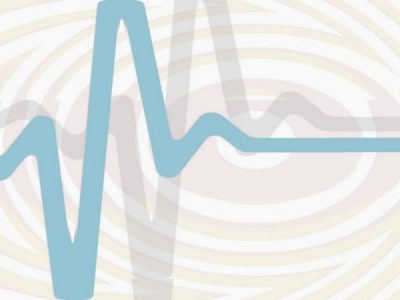Welcome to the adverse drug reactions and drug side effects section for physicians and pharmacists. This section features links to clinical practice resources on reporting, identifying and managing adverse drug reactions and drug side effects.
What is an adverse drug reaction?
- The European Medicines Agency defines an adverse drug reaction (ADR) as a noxious and unintended response to a medicine.1
- The World Health Organization (WHO) defines an ADR as a response to a drug which is noxious and unintended, and which occurs at doses normally used in man for the prophylaxis, diagnosis, or therapy of disease, or for the modification of physiological function.2
What is a side effect?
- The American Society of Health-System Pharmacists describes a side effect typically used to describe ADRs that are known to occur with a medication with varying degrees of associated harm.3
- The International Union of Basic and Clinical Pharmacology describe a side-effect as any effect caused by a drug other than the intended therapeutic effect, whether beneficial, neutral or harmful. The term ‘side-effect’ is often used interchangeably with ‘ADR’ although the former usually implies an effect that is less harmful, predictable and may not even require discontinuation of therapy.4
Frequency of adverse drug reactions
The frequency of adverse drug reactions as stated in the literature (e.g. Summaries of Product Characteristics [SmPCs], patient information leaflets [PILs]) can be categorised as:
- Very common: More than 1 in 10 people affected
- Common: Between 1 in 10 and 1 in 100 people affected
- Uncommon: Between 1 in 100 people and 1 in 1,000 affected
- Rare: Between 1 in 1,000 people and 1 in 10,000 affected
- Very rare: Less than 1 in 10,000 people affected
Risk factors for adverse drug reactions
Potential risk factors for adverse drug reactions can include:
- Polypharmacy
- Age: older patients, children
- Renal impairment
- Hepatic impairment
- Concomitant medicines use
- Co-morbidities
- Genetic factors
- Sex
- Ethnicity
Examples of adverse drug reactions
Here is a table showing some examples of adverse drug reactions:
|
Adverse Drug Reaction |
Drugs |
|---|---|
|
Osteonecrosis of the jaw |
Bisphosphonates e.g. alendronic acid, risedronate |
|
Thrombocytopenia |
Heparin, gold, sulphonamides |
|
Stevens-Johnson syndrome/toxic epidermal necrolysis |
Penicillins, phenytoin, carbamazepine, allopurinol |
|
Serotonin syndrome |
Linezolid, lithium, selective serotonin reuptake inhibitors (SSRIs) e.g. citalopram, escitalopram |
|
Agranulocytosis |
Clozapine, carbamazepine, carbimazole |
|
QT prolongation |
Amiodarone, fluconazole, moxifloxacin, antipsychotics, ondansetron, citalopram, escitalopram, erythromycin, clarithromycin |
|
Anaphylaxis |
Penicillins, nonsteroidal anti-inflammatory drugs (NSAIDs) |
|
Systemic lupus erythematosus |
Hydralazine, terbinafine |
|
Drug reaction with eosinophilia and systemic symptoms (DRESS) |
Allopurinol |
|
Rhabdomyolysis |
Statins, colchicine, propofol |
|
Neuroleptic malignant syndrome |
Antipsychotics |
|
Peripheral neuropathy |
Metronidazole, phenytoin, isoniazid, nitrofuratoin |
|
Gastric ulceration |
NSAIDs |
|
Ketoacidosis |
Sodium-glucose cotransporter 2 inhibitors (SGLT2) e.g. dapagliflozin, empagliflozin, canagliflozin |
Source: Information derived from electronic Medicines compendium – Summaries of Product Characteristics. Available at http://www.medicines.org.uk [Accessed on 21/08/2024].
Drug Analysis Profiles : Medicines and Healthcare Products Regulatory Agency
For suspected side effects being reported for medicines, the MHRA publishes this information in the form of interactive Drug Analysis Profiles (iDAPs) which can be accessed below.
Each iDAP contains a complete listing of all suspected adverse reactions that have been reported to the MHRA via the Yellow Card scheme. This includes all reports received from healthcare professionals, members of the public, and pharmaceutical companies.
- Source: yellowcard.mhra.gov.uk
- Clinical Resource: Drug Analysis Profiles
- Register to Access Content: No
European database of suspected adverse drug reaction reports
On this website you can view data on suspected side-effects also known as suspected adverse drug reactions for authorised medicines in the European Economic Area (EEA).
- Source: adrreports.eu
- Clinical Resource: Reports
- Register to Access Content: No
Canada Vigilance Adverse Reaction Online Database
The Canada Vigilance Adverse Reaction Online Database contains information about suspected adverse reactions (also known as side effects) to health products.
Adverse reaction reports are submitted by:
- consumers and health professionals, who submit reports voluntarily
- manufacturers and distributors (also known as market authorization holders), who are required to submit reports according to the Food and Drugs Act.
- Source: canada.ca
- Clinical Resource: Database
- Register to Access Content: No
Yellow Card Scheme – MHRA
The Yellow Card Scheme is vital in helping the MHRA monitor the safety of all healthcare products in the UK to ensure they are acceptably safe for patients and those that use them. Reports can be made for all medicines including vaccines, blood factors and immunoglobulins, herbal medicines and homeopathic remedies, and all medical devices available on the UK market.
The Scheme collects information on suspected problems or incidents involving
- side effects (also known as adverse drug reactions or ADRs)
- medical device adverse incidents
- defective medicines (those that are not of an acceptable quality)
- counterfeit or fake medicines or medical devices
- Source: yellowcard.mhra.gov.uk
- Clinical Resource: Online Reporting
- Register to Access Content: No
Drug Safety Update
Drug Safety Update is the monthly electronic bulletin from the MHRA and Commission on Human Medicines.
Drug Safety Update is essential reading for all healthcare professionals, bringing you the very latest information and advice to support the safer use of medicines.
- Source: gov.uk/mhra
- Clinical Resource: Electronic Bulletins
- Register to Access Content: No
MedWatch: The FDA Safety Information and Adverse Event Reporting Program
Your FDA gateway for finding clinically important safety information and reporting serious problems with human medical products.
- Source: fda.gov
- Clinical Resource: Various
- Register to Access Content: No
MedEffect Canada – Health Product InfoWatch
The Health Product InfoWatch is a monthly publication intended primarily for healthcare professionals. It provides clinically relevant safety information on pharmaceuticals, biologics, medical devices and natural health products.
- Source: canada.ca
- Clinical Resource: Newsletters
- Register to Access Content: No
Medicines Safety Update
Medicines Safety Update (MSU) provides health professionals with practical information and advice on drug safety and information about emerging safety issues. The articles also provide information on adverse event reporting and how health professionals can contribute to safety monitoring in Australia. Safety update articles are published as relevant topics arise.
- Source: tga.gov.au
- Clinical Resource: Updates
- Register to Access Content: No
Polypharmacy Guidance, Realistic Prescribing
Scottish Government Polypharmacy Model of Care Group, 2018
We are delighted to present the third edition of Polypharmacy Guidance, Realistic Prescribing 2018, which aims to provide guidance on preventing inappropriate polypharmacy at every stage of the patient journey. The 7-Steps is a clear structure for both the initiation of new and the review of existing treatments, which has been updated to place a greater emphasis on ‘what matters to the patient’? The Drug Efficacy (NNT) tables have been refined and provide the relative clinical efficacy of common interventions, for the patient. Harm reduction can be targeted through the use of the Cumulative Toxicity and Anticholinergic Burden tools. An extensive set of Polypharmacy Indicators have been developed and prioritised by a clinical consensus approach, in order to standardise Case Finding, understand prevalence, and provide Clinical Outcomes monitoring.
- Source: rightdecisions.scot.nhs.uk
- Clinical Resource: Guidance
- Register to Access Content: No
Thinking clearly about the anticholinergic burden
Older people can be particularly sensitive to the anticholinergic effects of medicines. Adverse effects may arise from an individual anticholinergic medicine, and from the cumulative effects of multiple medicines with varying degrees of anticholinergic properties.
- Source: veteransmates.net.au
- Clinical Resource: Brief
- Register to Access Content: No
The American Geriatrics Society (AGS) has released its latest update to one of geriatrics’ most frequently cited reference tools: The AGS Beers Criteria® for Potentially Inappropriate Medication Use in Older Adults. With more than 90% of older people using at least one prescription and more than 66% using three or more in any given month, the AGS Beers Criteria® plays a vital role in helping health professionals, older adults, and caregivers work together to ensure medications are appropriate.
- Source: americangeriatrics.org
- Clinical Resource: Guideline
- Register to Access Content: No
LiverTox
LiverTox® provides up-to-date, unbiased and easily accessed information on the diagnosis, cause, frequency, clinical patterns and management of liver injury attributable to prescription and nonprescription medications and selected herbal and dietary supplements.
LiverTox is produced by the National Institute of Diabetes and Digestive and Kidney Diseases (NIDDK)
- Source: nlm.nih.gov
- Clinical Resource: Database
- Register to Access Content: No
Pneumotox On Line
The Drug-Induced Respiratory Disease Website
Pneumotox is an aid to the diagnosis of drug-induced & iatrogenic respiratory disease
The place to go for continuously updated information about DIRD
You may access it by generic drug names (alphabetical order) or patterns grouped by families
- Source: pneumotox.com
- Clinical Resource: Database
- Register to Access Content: No
QT Drugs Lists
QT Drugs Lists: This portal includes QTdrugs.org, a list of drugs categorized by their potential to cause QT prolongation and/or torsades de pointes (TdP).
The lists can be exported as PDF or Excel files, printed and can be searched and sorted by: Generic Name, Brand Name, Risk Category, Pharmacologic Class, and Therapeutic Use.
- Source: crediblemeds.org
- Clinical Resource: Lists
- Register to Access Content: Yes – registration is FREE
Pharmaceutical excipients – where do we begin?
Excipients have been defined in many ways, including as inert substances used as vehicles and diluents for drugs. The problem with this definition is that in recent years excipients have proved to be anything but inert, not only possessing the ability to react with other ingredients in the formulation, but also to cause adverse and hypersensitivity reactions in patients.
- Source: nps.org.au
- Clinical Resource: Journal Article
- Register to Access Content: No
Resources last checked: 22/07/2024
References
- European Medicines Agency. Glossary of regulatory terms. Available at: https://www.ema.europa.eu/en/about-us/glossaries/glossary-regulatory-terms [Accessed on 21/08/2024].
- World Health Organization. The importance of pharmacovigilance (safety monitoring of medicinal products). 2002. Available at: https://iris.who.int/bitstream/handle/10665/42493/a75646.pdf [Accessed on 21/08/2024].
- American Society of Health-System Pharmacists. ASHP Guidelines on Adverse Drug Reaction Monitoring and Reporting. Am J Health Syst Pharm. 2022;79(1):e83-e89. Available at: https://www.ashp.org/-/media/assets/policy-guidelines/docs/guidelines/adverse-drug-reaction-monitoring-reporting.pdf [Accessed on 21/08/2024].
- International Union of Basic and Clinical Pharmacology (IUPHAR) Pharmacology Education Project. Adverse drug reactions. Available at: https://www.pharmacologyeducation.org/clinical-pharmacology/adverse-drug-reactions [Accessed on 21/08/2024].



